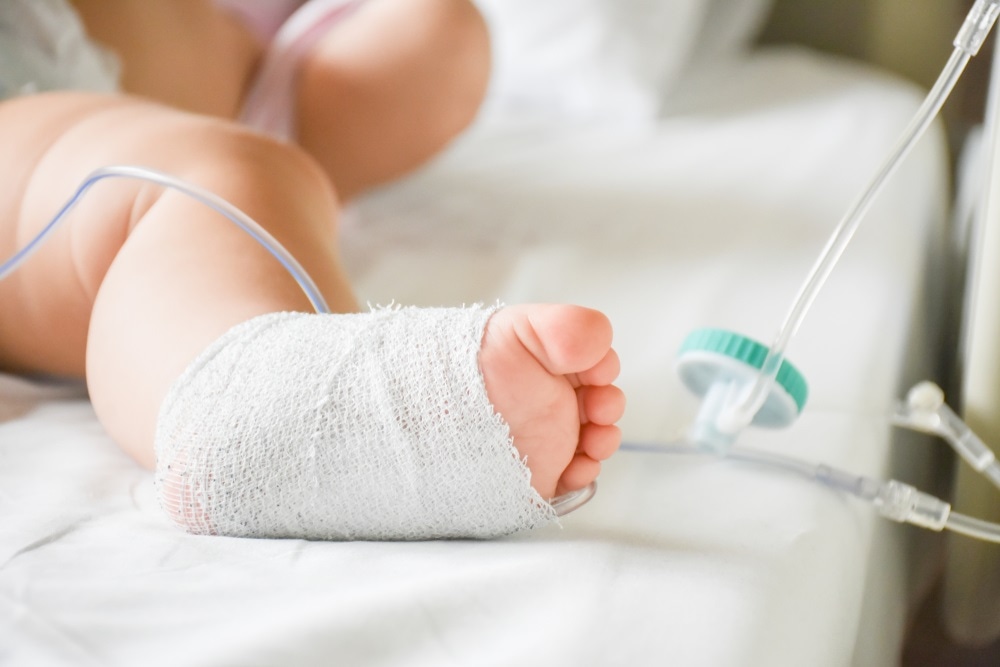New research to be presented at the European Congress of Clinical Microbiology and Infectious Diseases (ECCMID) shows that it is safe to give antibiotics to mothers after umbilical cord clamping in Caesarean section, rather than before, to avoid exposure of the newborn baby to these drugs.
 Image Credits: Tekkol / Shutterstock.com
Image Credits: Tekkol / Shutterstock.com
The study is by Dr Rami Sommerstein, Bern University Hospital, Bern, Switzerland, and colleagues from Swissnoso, the Swiss National Centre for Infection Control.
The World Health Organization (WHO) recommends administration of surgical antimicrobial prophylaxis (SAP) in Caesarean section prior to incision to prevent surgical site infections (SSIs), including endometritis, one of the most common types of these infections.
However, SAP may disrupt the baby's developing gastrointestinal microbiome if given before umbilical cord clamping. The authors thus studied whether giving antibiotics before or after clamping of the umbilical cord had any effect on the rate of SSIs in the mothers.
The current practice to give antimicrobial prophylaxis before incision was introduced in around 2012, after various evidence was published, and this was when many obstetricians switched to 'before incision' practice. WHO then published guidance in 2015.
However, not all hospitals switched to the new practice (in Switzerland or other countries). As a result, it is possible to compare the outcomes of women who were given the antibiotics before incision with those given antibiotics after.
The study used data from the Swissnoso national SSI surveillance system, from 2009 to 2018. The study included mothers from 178 hospitals. The researchers included all Caesarean section patients that were given the SAP agents cefuroxime, cefazolin, amoxicillin/clavulanate or ceftriaxone, either within 60 minutes before incision or after clamping.
Data from 30-day post-discharge follow-up was available in 89% of cases, allowing the researchers to assess the association between SAP administration relative to incision and clamping and the SSI rate, using computer models. The data was then adjusted for patient characteristics, procedural variables, and health-care system factors.
A total of 55,901 patients met the criteria: SAP was administered before incision in 26,405 patients (47.2%) and after clamping in 29,496 patients (52.8%). Overall, 846 SSIs were documented, of which 379 (1.6%) occurred before incision and 449 (1.7%) after clamping, with no statistically significant difference between the two methods, proving them to be equally safe. Supplementary and subgroup analyses supported these main results.
The authors conclude: "The results of this large prospective study provide strong evidence that the risk of surgical site infection for the mother in Caesarean section is not increased if antibiotic prophylaxis is given after umbilical cord clamping, compared to before incision. Given the latest research on the potentially detrimental effects of early-life antimicrobial exposure, guidance regarding optimal SAP timing should be re-evaluated."